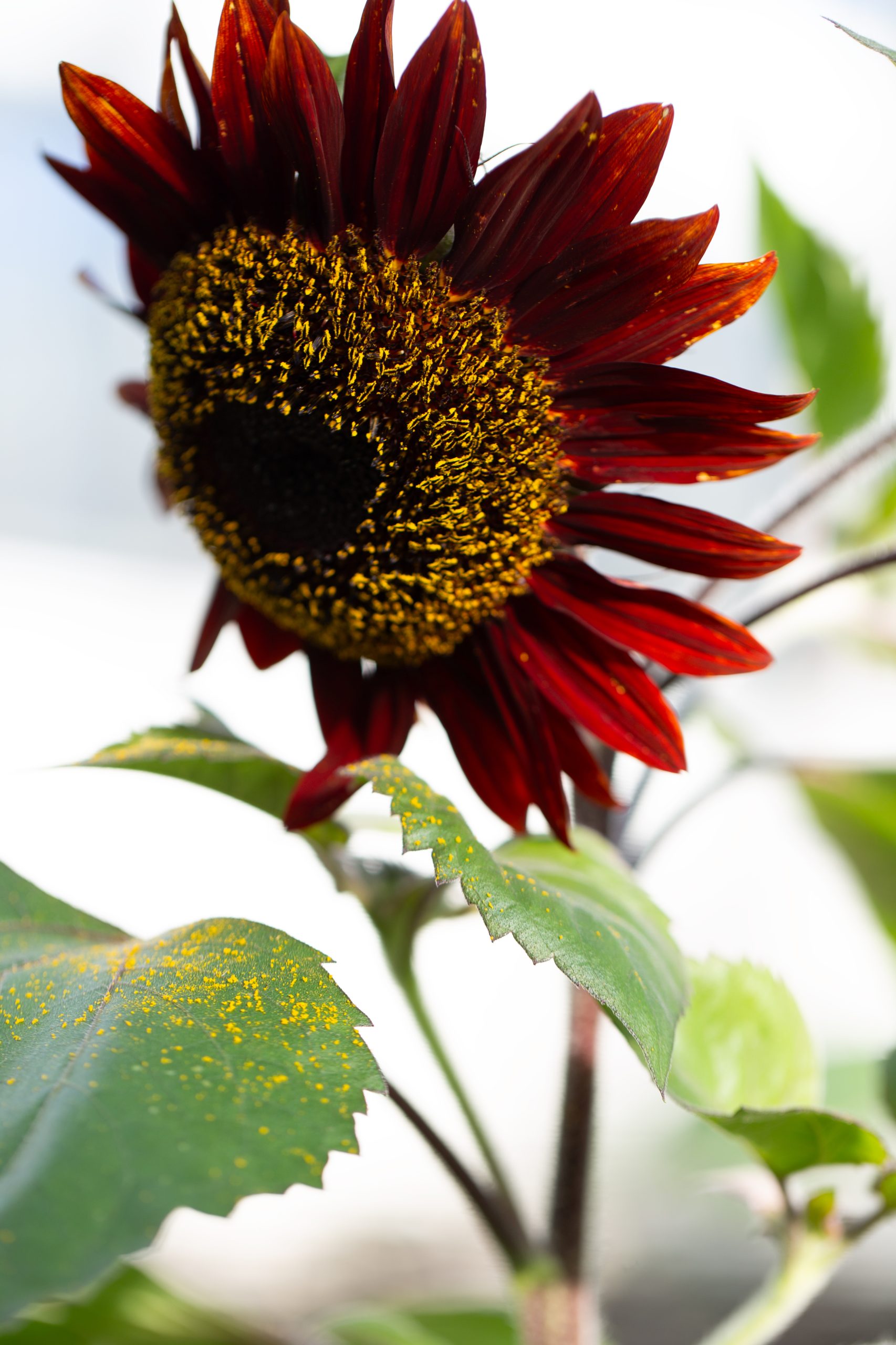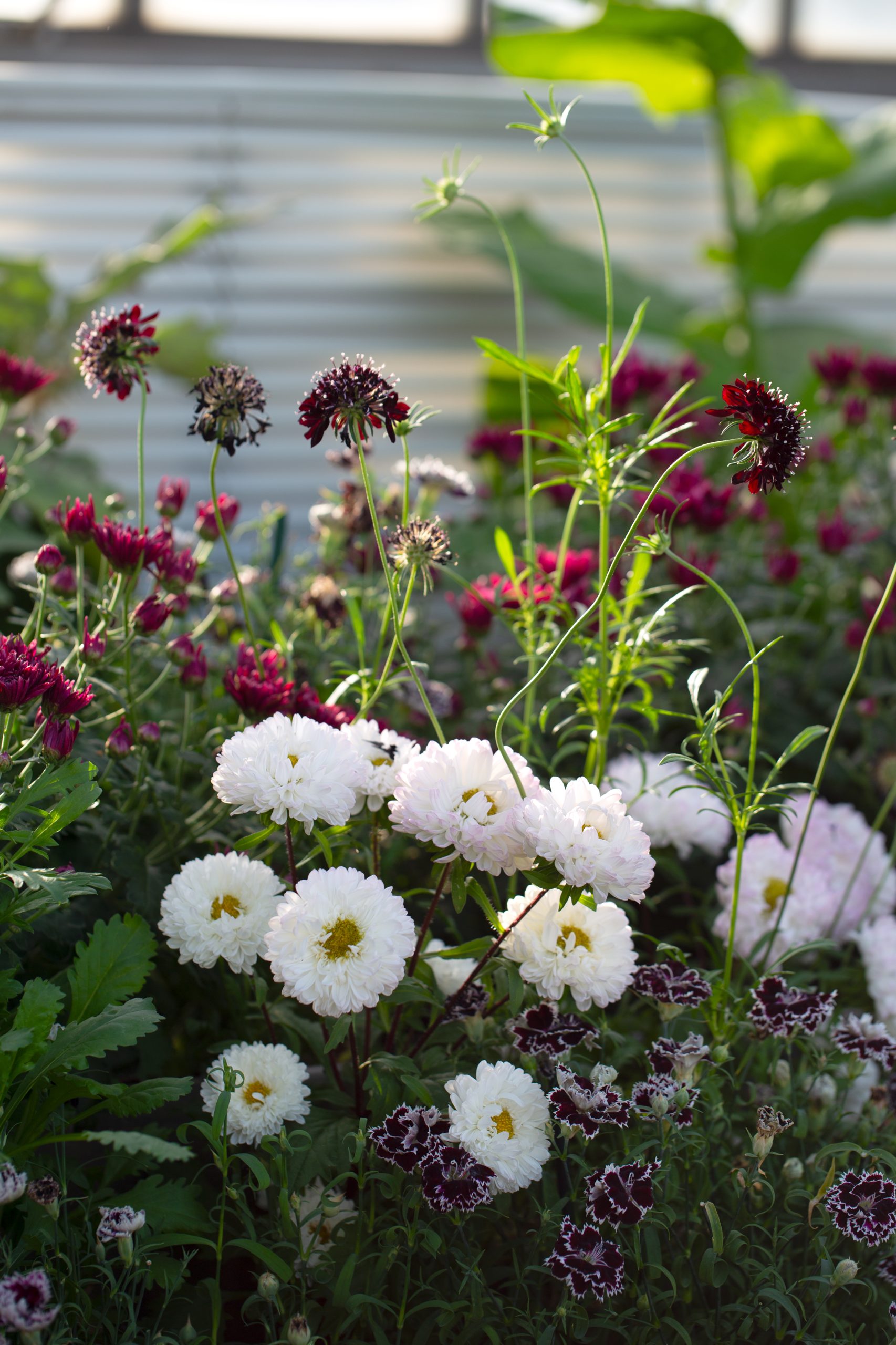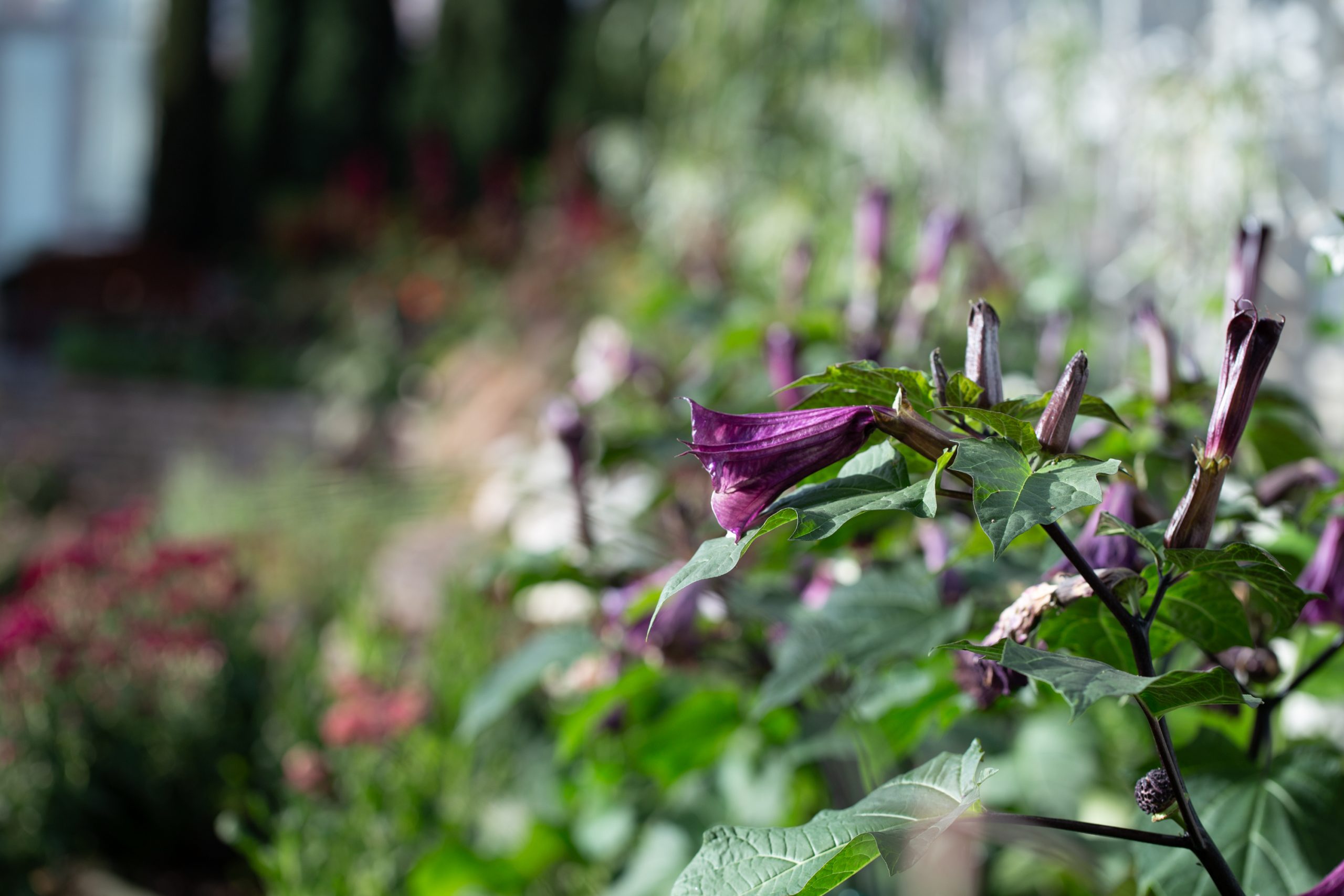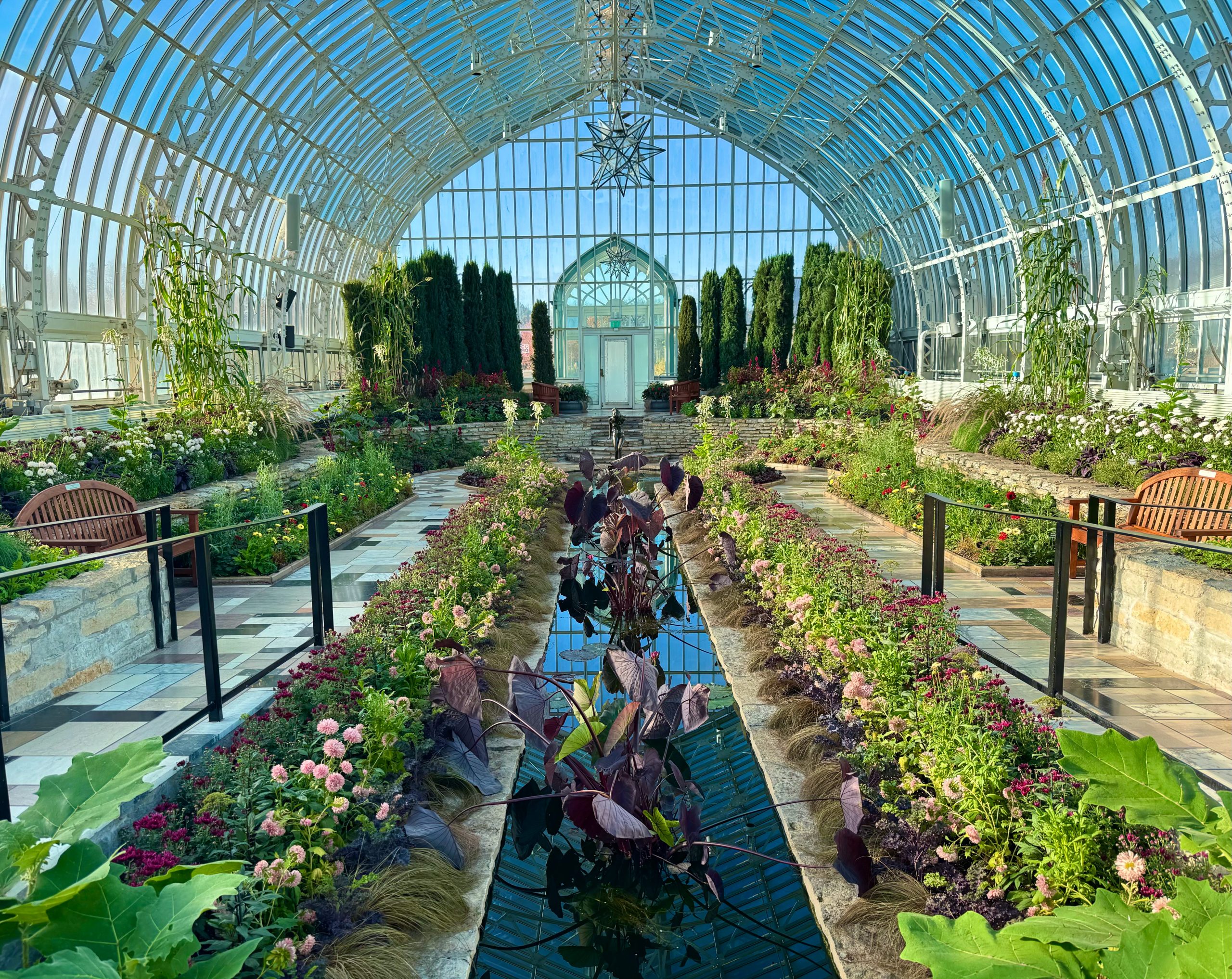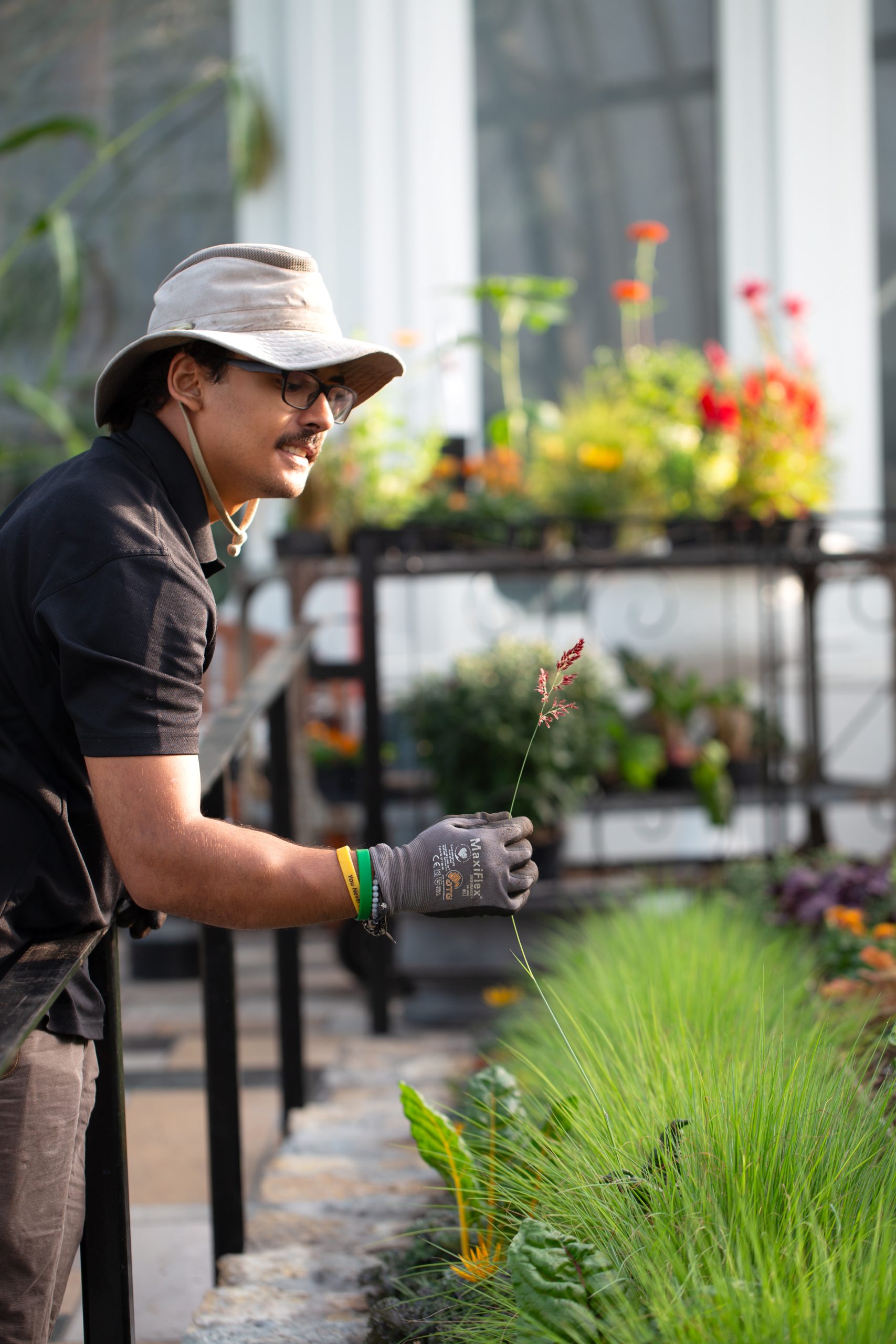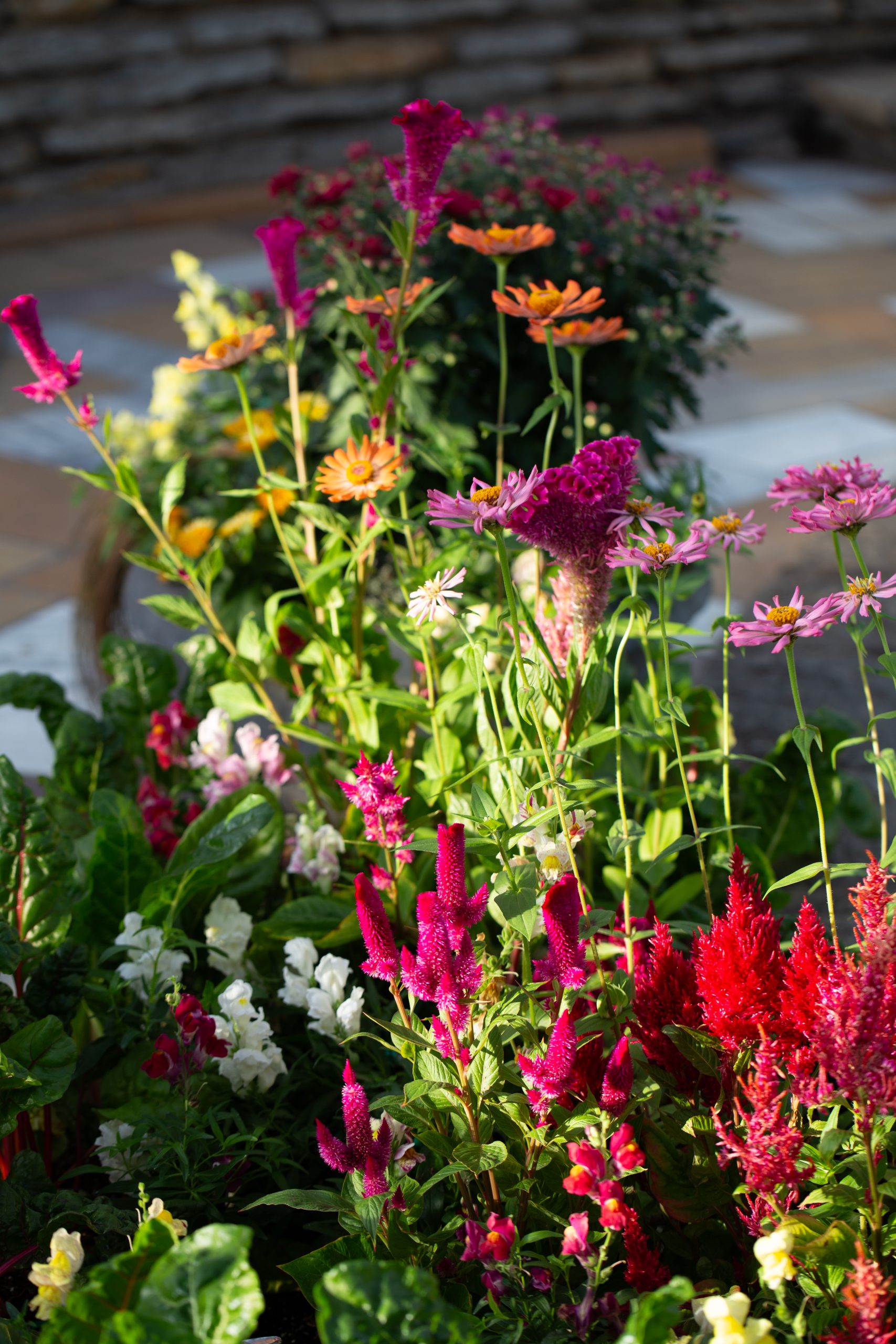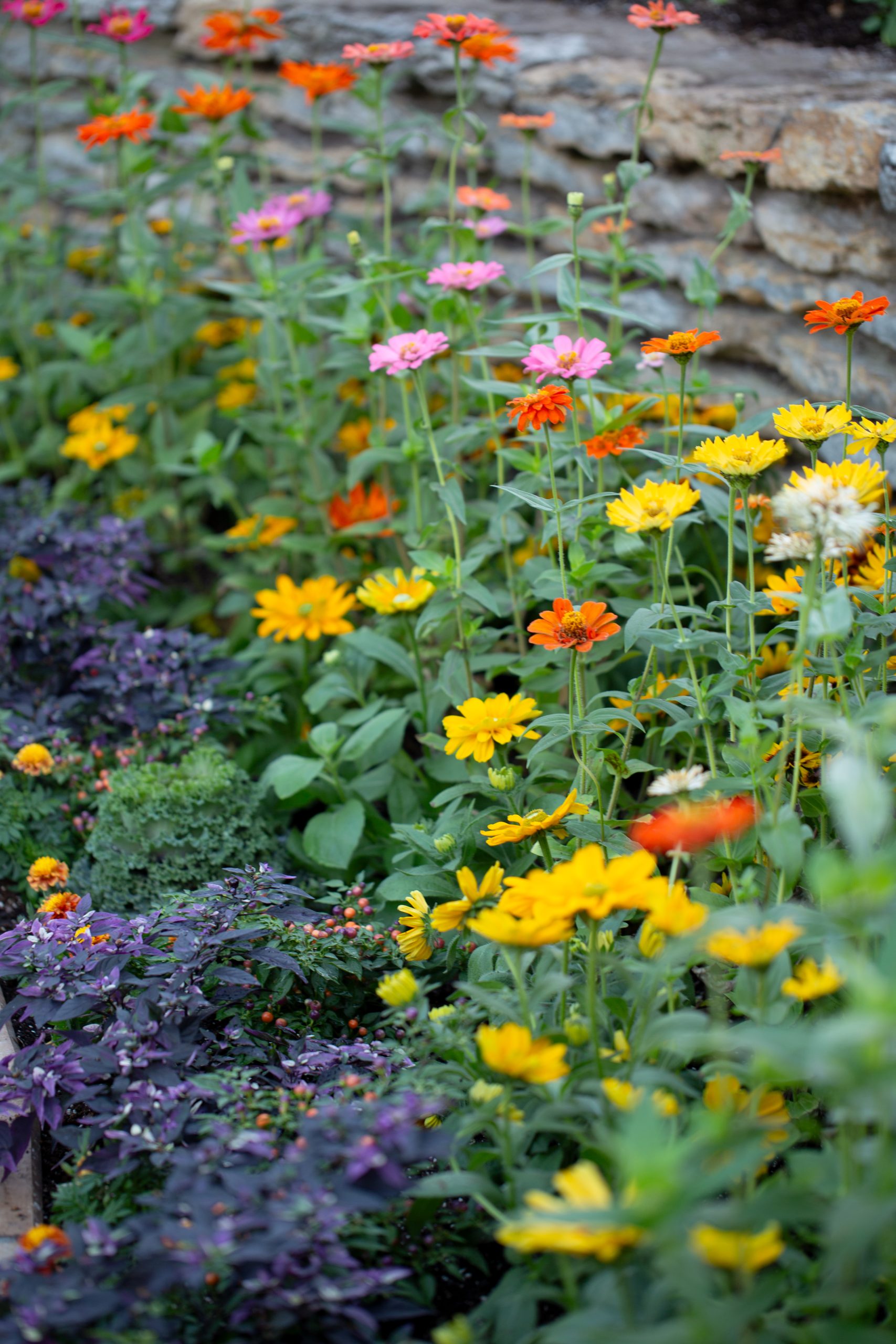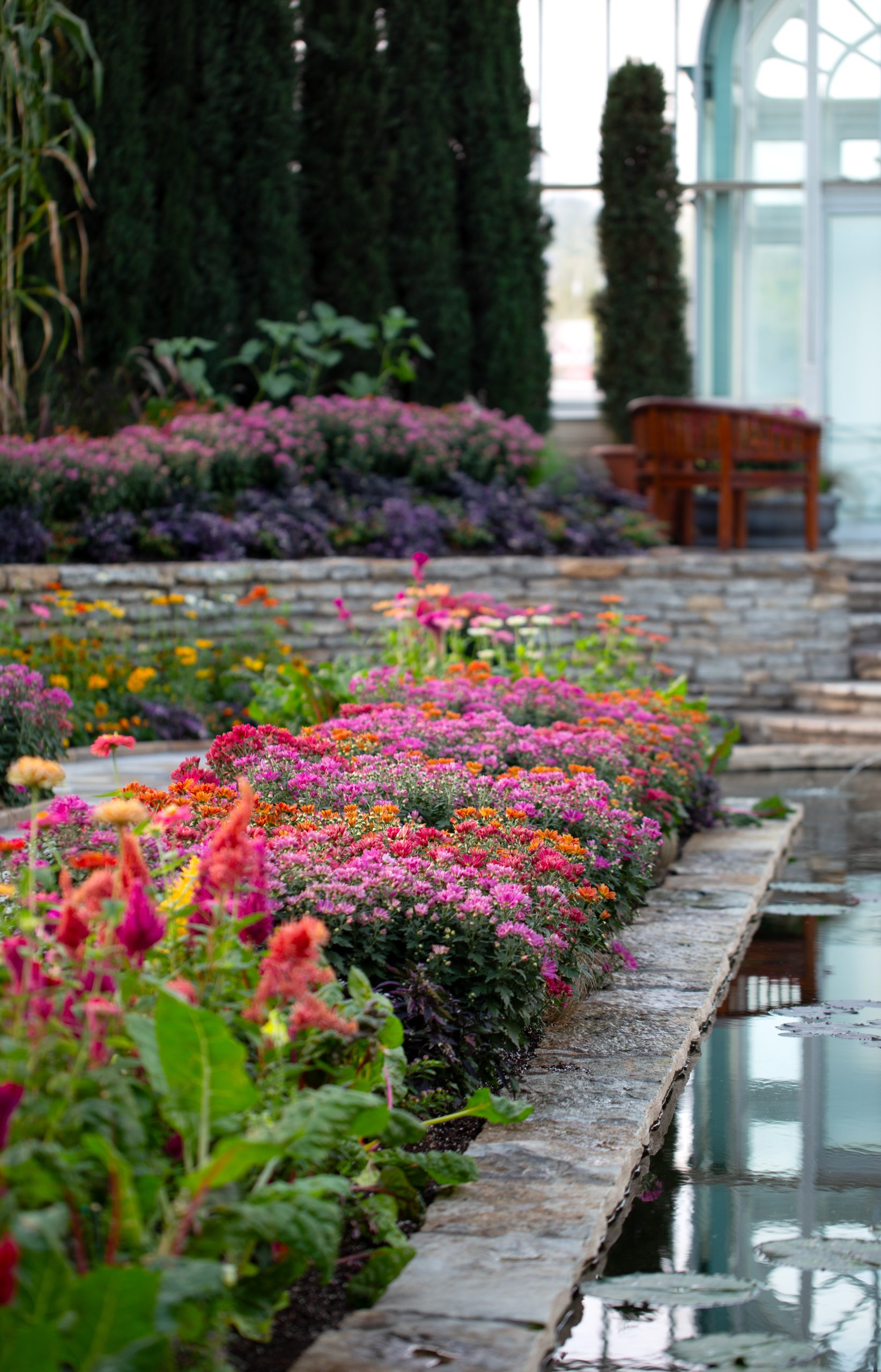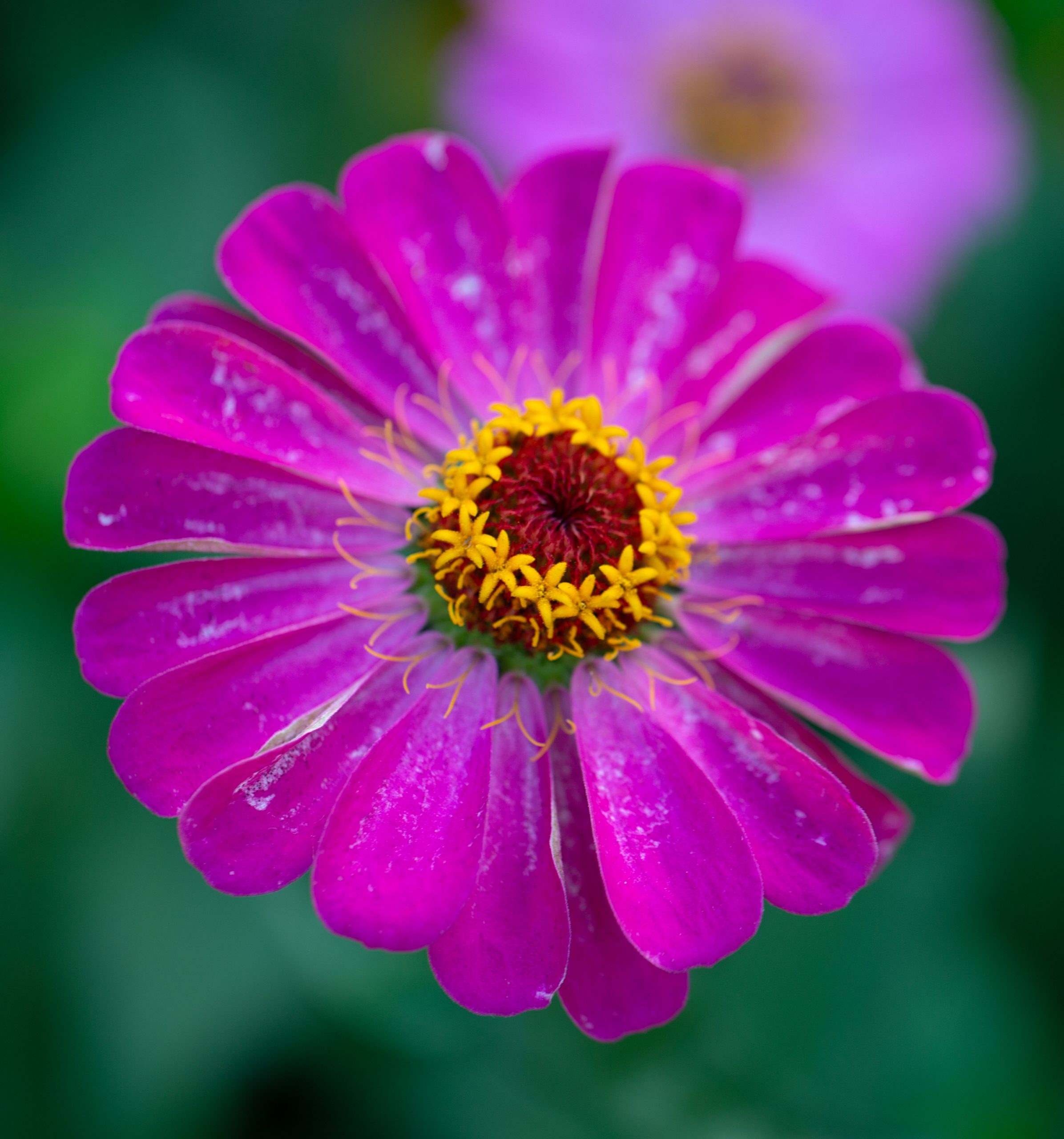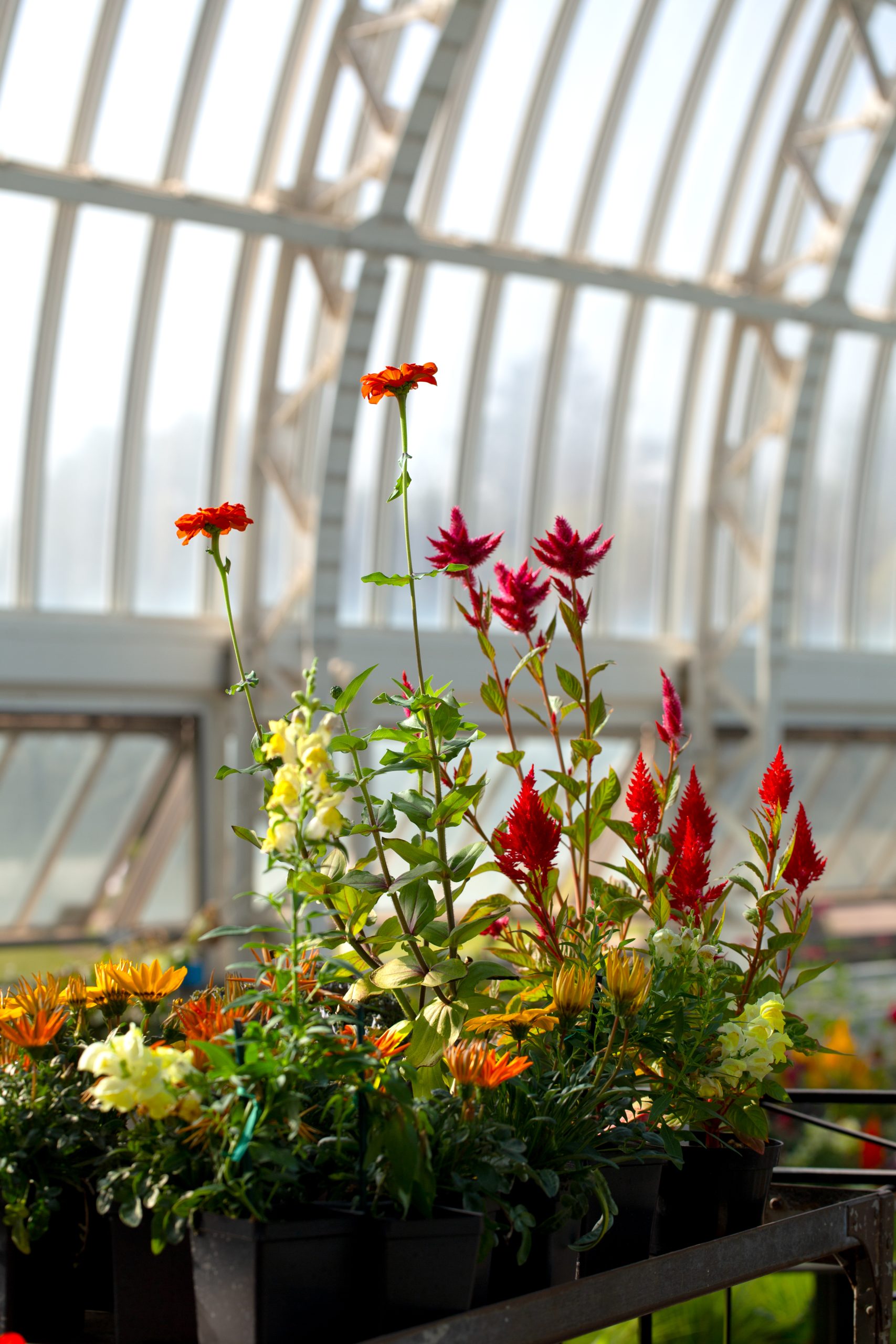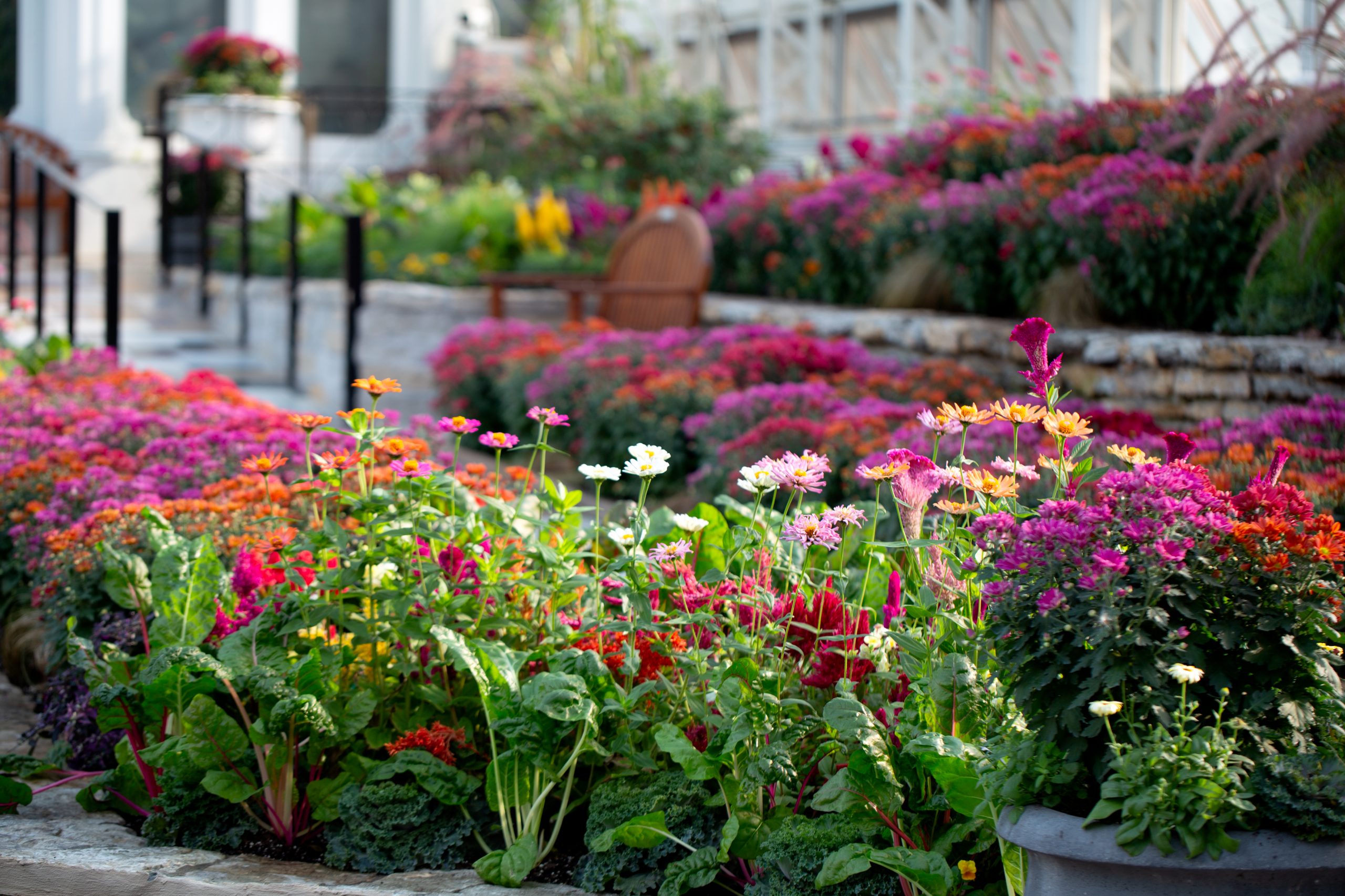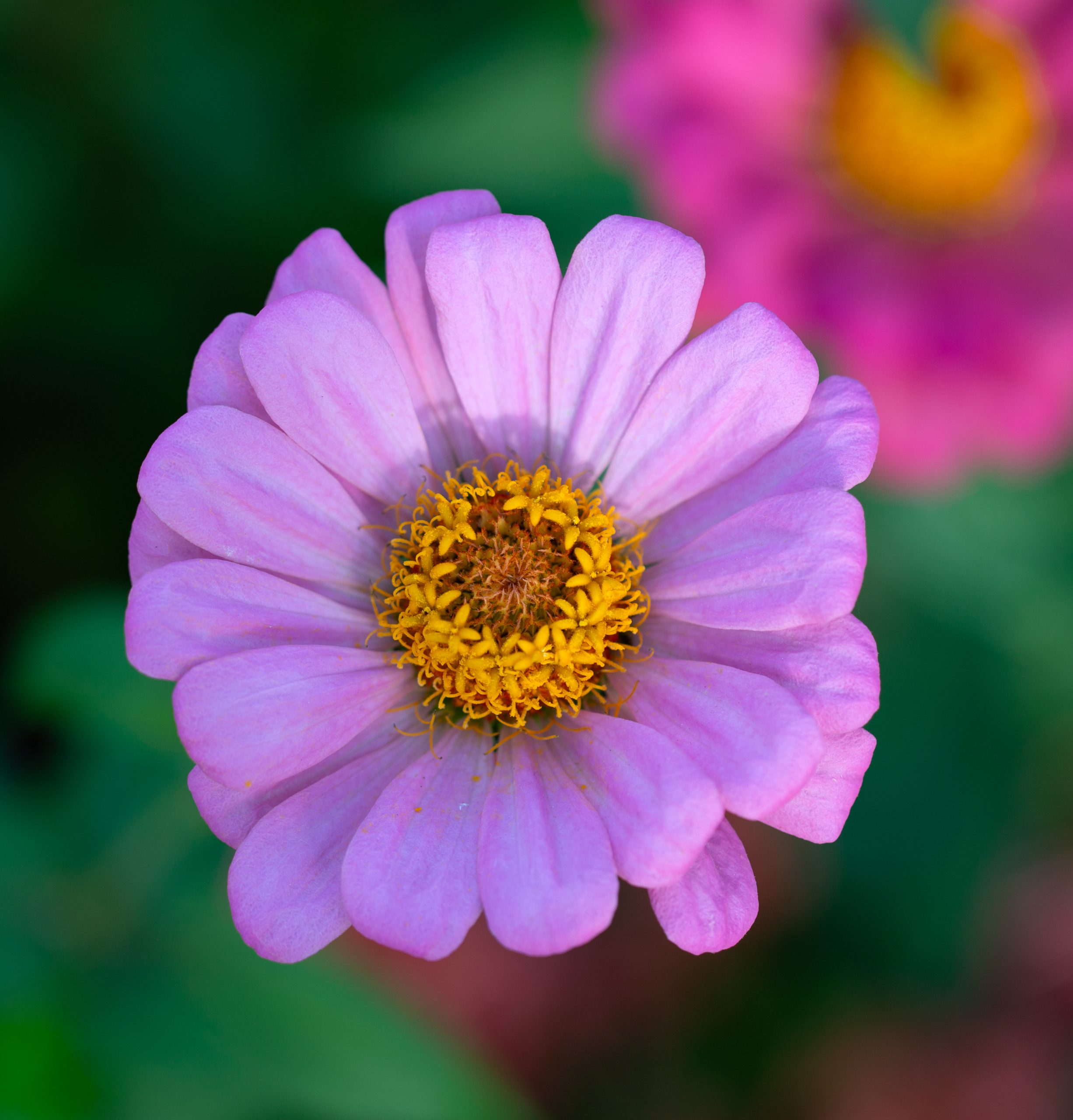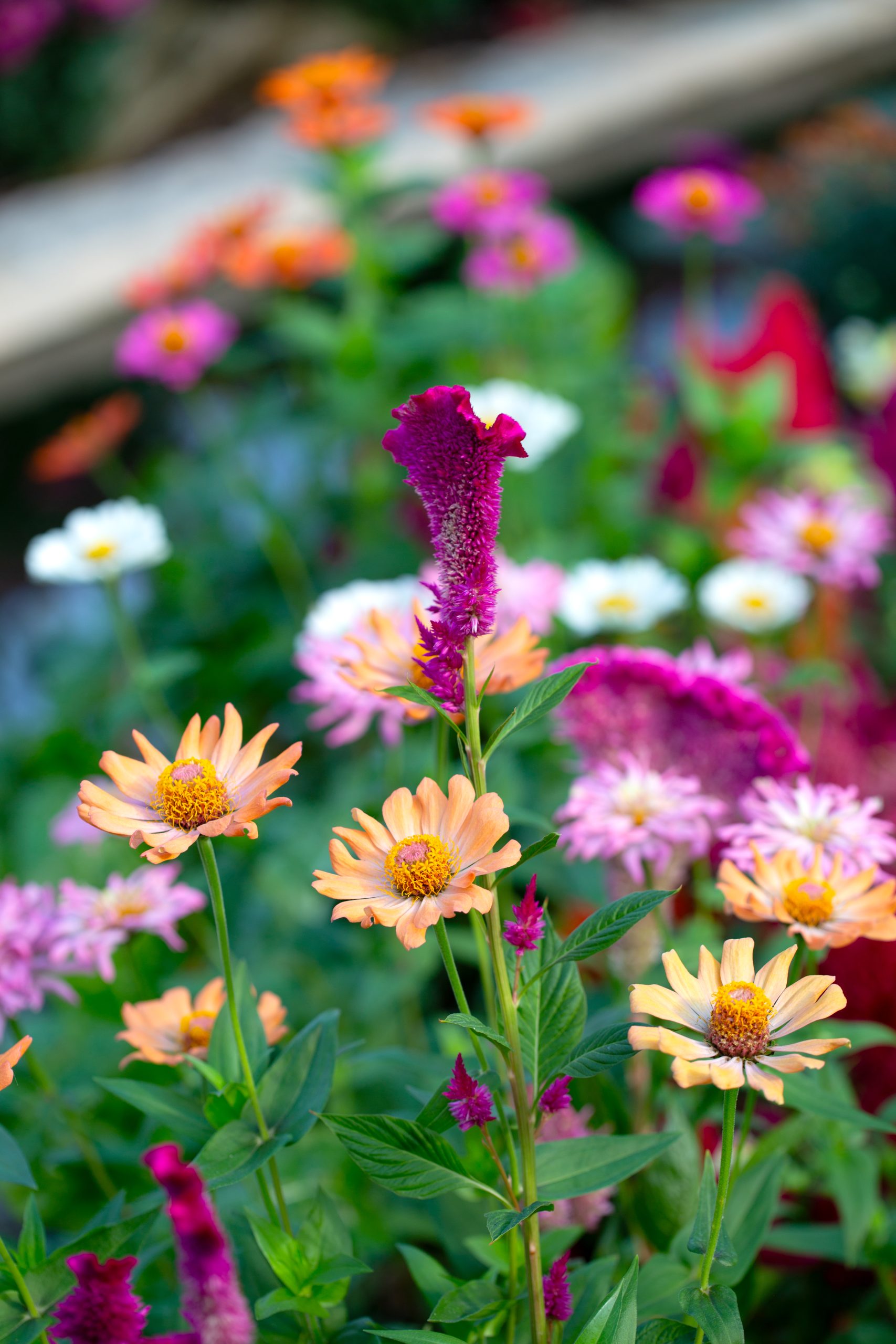Horticulturist Rylee Werden plays with perspective in the first half of the Fall Flower Show with the Parallax View
The second half of the Fall Flower Show features a saturated palette and poisonous plants
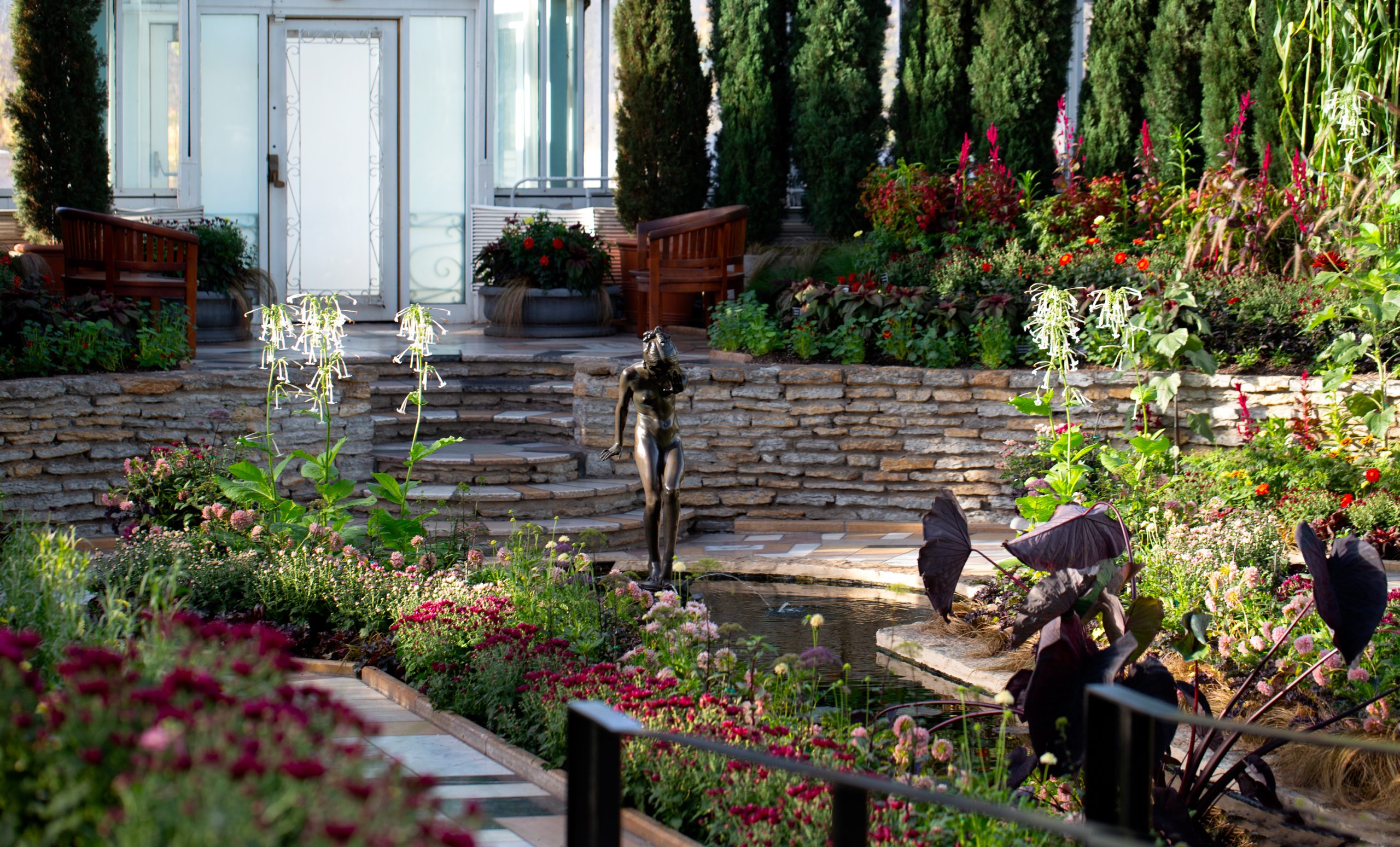
After a sunny start to the Fall Flower Show, the mood in Minnesota’s most beautiful room has gone a little Goth, with the introduction of a new palette of saturated black, red, and purple chrysanthemums, and the third Mum color is a light pink and white bicolor flower, “Spring Pink”, to contrast the dark colors.
“After the brightness of the first half of the show, you’ll notice a very different feel to the room with these deeper, darker colors,” says horticulturist Rylee Werden, who designed both halves of the Fall Flower Show, now on display through November 30.
In keeping with the Halloween feel of the season, visitors have been very interested in a featured tomato-relative—the Naranjilla plant, Solanum quiotense—a variety known as “bed of nails” for the seemingly blood-letting spikes on its leaves. Complementing the dark traditional mums are purple datura, a poisonous plant that Werden grew from seed she collected at home.
“They’re a favorite with visitors because they do smell great, but you shouldn’t eat them!” she says.
Thanks to your contributions to Como Friends, the Marjorie McNeely Conservatory is open every day of the year and is always free to visitors. The Fall Flower Show runs through November 30, and the Holiday Flower Show begins December 5.
If you’d like a sneak peek at Como’s traditional Poinsettia display, Como Friends donors and members are invited to a Special Access Event on December 4.
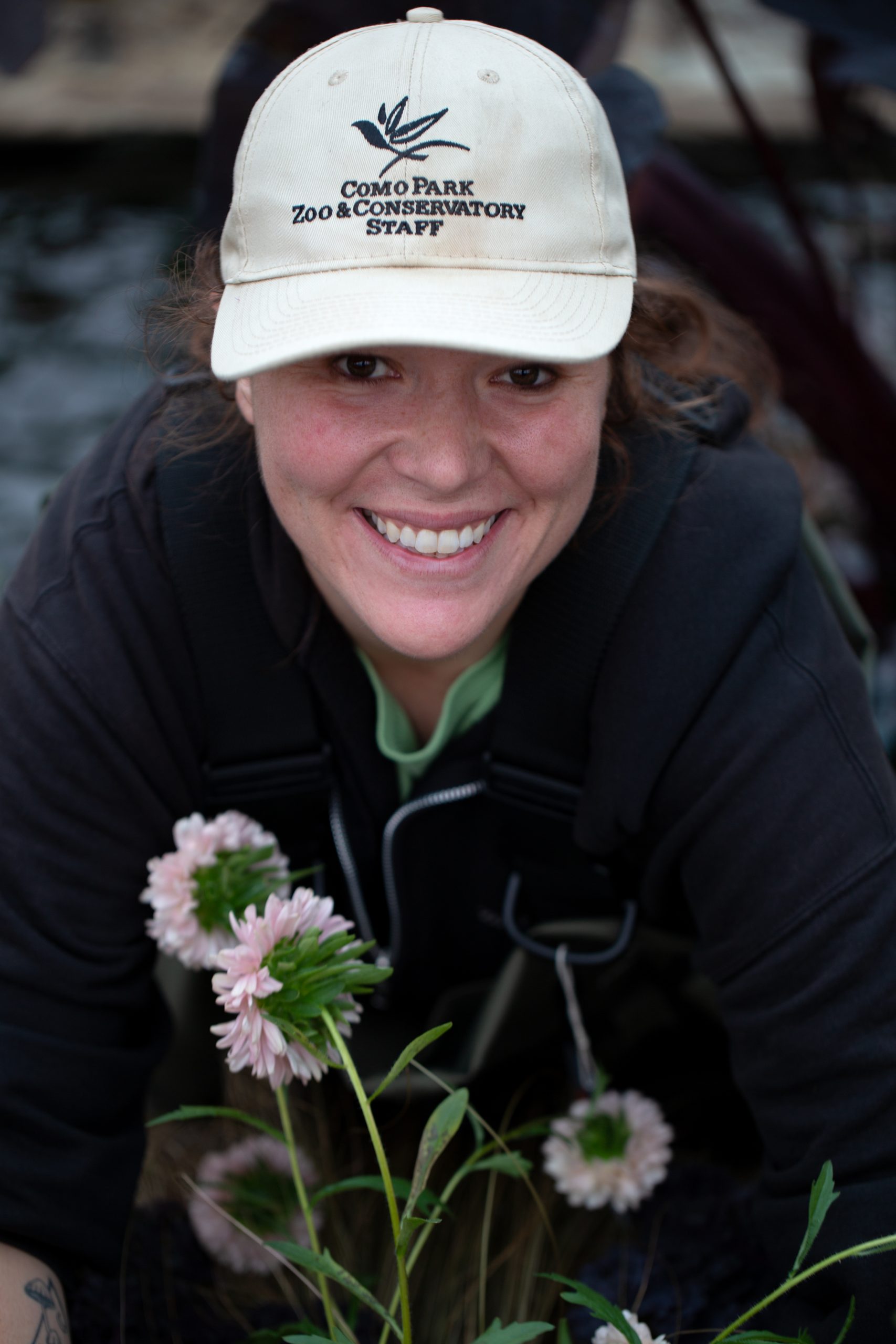
No matter what time of year you visit the Marjorie McNeely Conservatory’s Sunken Garden, the elevated view from the entryway is always stunning. But after designing several seasonal flower shows for Minnesota’s most beautiful room, Como horticulturist Rylee Werden began to wonder what it would be like to play a little more with perspective as visitors move through the room.
Inspired by the geometric patterns and intersecting lines of Art Deco, Werden decided to design the first half of the Fall Flower Show, on display now through October 19, with a sense of movement in mind. The view from the top reveals hundreds of chrysanthemums arranged in a chevron, Werden explains, “a big zig-zag across the center of the room, that features stripes of three different colors of mum—–orange, dark pink, and plum.” As visitors descend to the garden path, they’ll begin to pick up on a parallax view, she says, a perceptual phenomenon where an object’s apparent position shifts when viewed from different angles.
“I always try to think about the different perspectives of someone walking through the garden,” she says. “As you get down to the garden path, the perspective changes and you’ll see some nice grass between the mums to rest your eye, and you’ll see through those angles a bit differently.”
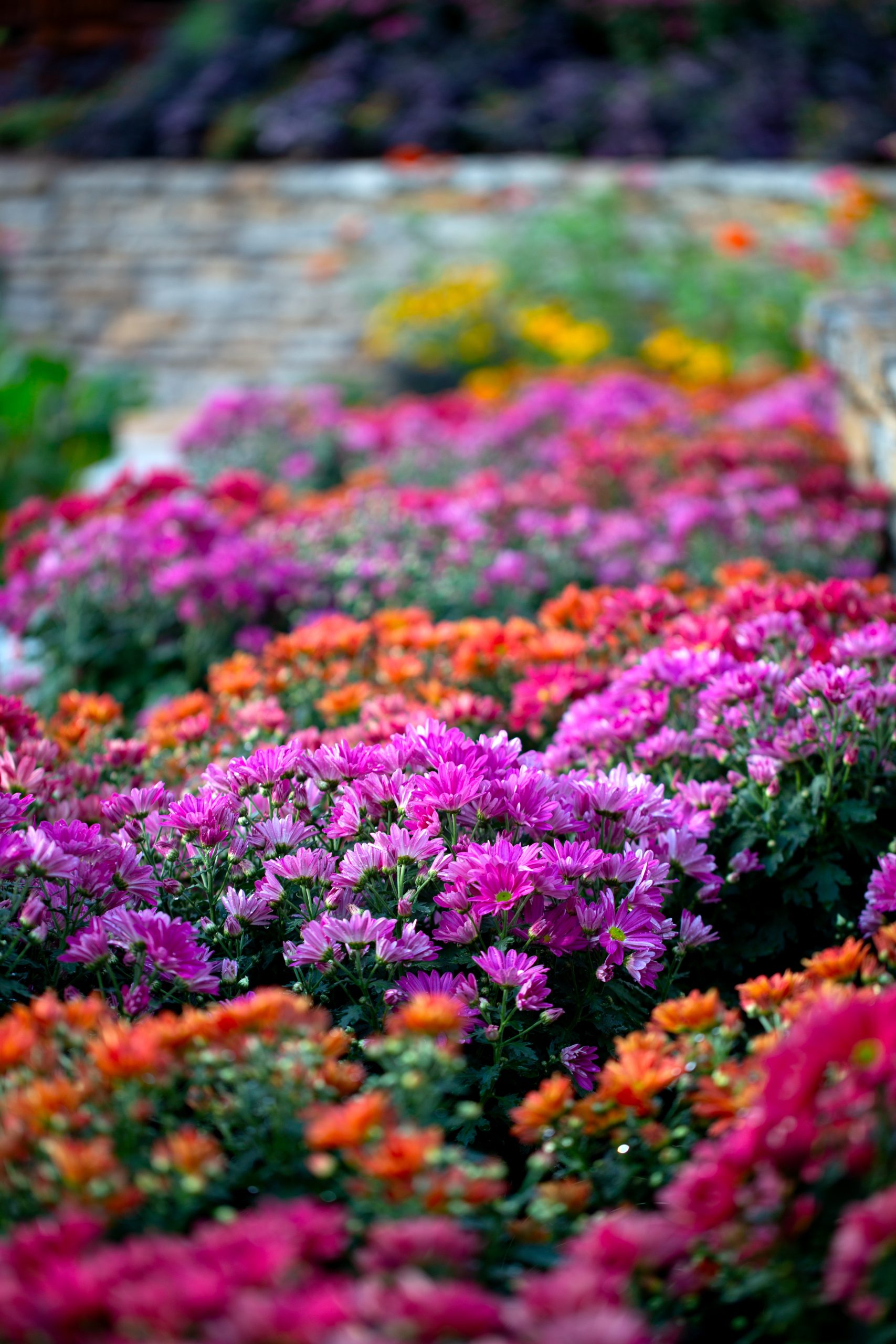
Como’s fall chrysanthemum show has been a tradition since 1915, the same year that Como’s historic Como Conservatory first opened to the public. Around the world, the chrysanthemum is seen as a symbol of longevity and happiness, but in the Midwest, the fall flower’s rich coloring and spicy scent also remind us that winter’s not far away. “That’s why it’s a great time to slow down, and enjoy the changing colors, which I think visitors will see reflected in the room,” Werden says.
Mums also signal the important role that fall’s flowering plants play in fostering healthy ecosystems. “In outdoor gardens, especially those with native plants, fall flowers are so important to feeding those pollinators before their big migrations,” she says. “Flowers like aster and goldenrod give our insects and our wildlife that last bit of juice or food they need to get them through the winter.” To see those connections, Werden suggests that visitors also stop by the Minnesota Garden, a collection of native and adaptive plants in front of Como’s Visitor Center, where horticulturists over-winter native plants to benefit birds and other wildlife. “It’s a more natural lens on what we do in the display garden to signal fall, with seed heads and plants that look ready for harvesting, like chard, broom corn, and celosia flowers.”
Cultivars of some of these native plants will be featured in the second half of the Fall Flower Show, which will be on display from October 24 through November 30. Thanks to your support for Como Friends, the Marjorie McNeely Conservatory’s five seasonal flower shows are always free to visitors.




Your support for Como Friends helps ensure the Marjorie McNeely Conservatory’s seasonal flower shows are always free to every visitor. Thank you!


